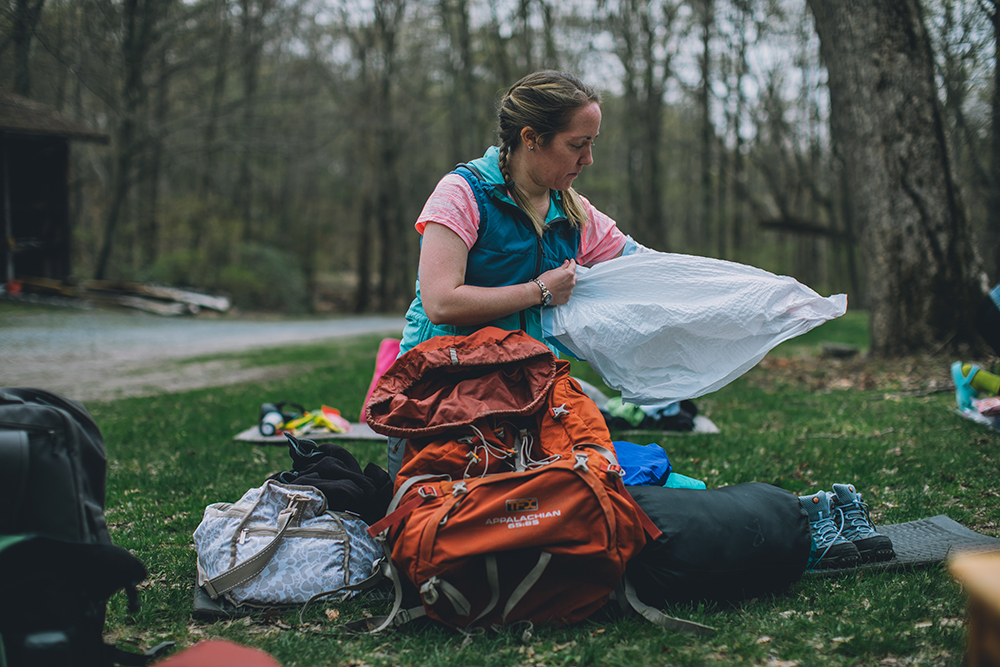

You may not need all the 10 essentials on most of your backcountry outings, but when an emergency arises, one or more of them could save your life.
Nature is unpredictable, and any outing into the backcountry can present challenges and dangers. Preparation is key to preventing and treating injuries or navigating out of a tricky situation while hiking, paddling, or climbing. Packing the 10 essentials will set you up to address most unexpected challenges you may face outdoors. The key is to always pack these items—whether on a day hike or a multi-day trip—as these are the items that are essential to survival. You may not use all 10 essentials on every trip, but you’ll be glad you have them in case of an emergency or challenge. Carrying and knowing how to use the 10 essentials will empower you to keep yourself and your companions prepared for whatever may come your way. Here’s a checklist on what to pack and how to use them:
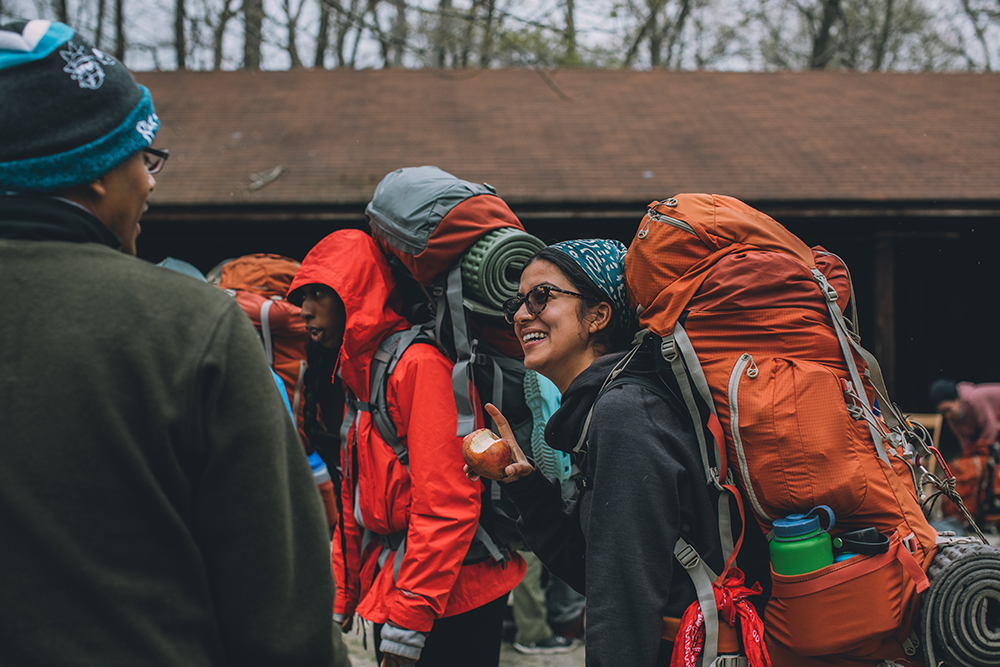

Maintaining proper hydration and nutrition are vital to maximize performance and refuel your backcountry adventure.
1. Hydration
Start out with 2 to 3 liters of water. Don’t forget to pack the tools to make additional clean water if needed, like a filter or iodine tablets, for if you’re out longer than expected or drop a bottle and spill all your water. Tablets of iodine or something similar can be tucked into a first-aid kit for emergencies.
2. Nutrition
Pack enough food for your planned hike, plus more than you think you’ll need. If a hike becomes longer than originally planned, extra food will help keep up energy and morale, and help you make clear decisions. A full day’s worth of extra food is a good rule of thumb, preferably that which doesn’t need to be cooked.
What should you eat? First off, fuel up before you even set foot on the trail and pack a blend of carbohydrates, fats, and proteins to consume consistently throughout the hike. Carbohydrates provide quick bursts of energy but can cause a “crash” and fatigue shortly after. Fats and proteins are slower burning and have more effect on our long-term energy levels. Good snacks for hiking, mountain biking, and backpacking include nuts, chocolates, cheese, meat sticks, energy bars, dehydrated fruits, and crackers. Be sure to pack post-activity snacks or have a plan for where you’ll eat after to avoid the “crash” on your way home. (Read more hiking nutrition tips from the registered dietitian and adviser to AMC’s Real Trail Meals cookbook.)
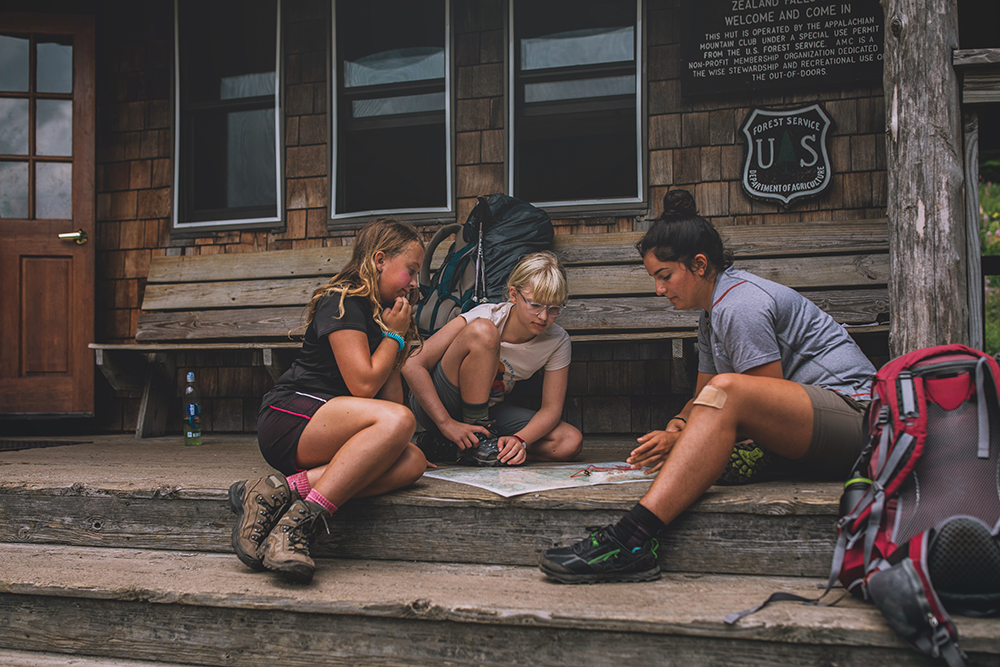

A good map and a working compass are a necessity anytime you venture into the backcountry.
3. Navigation
Pack the tools that will help get you back to a trailhead should you become lost or go off-trail. Do not rely solely on GPS watches, smart phones, or other electronic navigation devices, as they can lose battery power or functionality. Instead, pack a topographical map and standard navigation compass—and know how to use them. Consider taking a map and compass course, which AMC guide staff offer as one- and two-day classes.
Before you hit the trail, use your map to plan your route and familiarize yourself with the area you will be exploring. Map reading skills are perhaps the most important to practice, and the map becomes more powerful when used in conjunction with a compass. Be sure to choose the right map for your activity and area, learning the symbols, scale, compass rose, colors, declination, and contour interval of the map you will take into the field. Take note of the mileage and elevation gain of your intended hike, as well as water sources, potential hazards, and any land management restrictions. Always create a plan B, or bailout option, for your hike should the weather turn or another challenge arises. Waterproof your map before you head out!
During your hike, pack your map and compass in a place where they are easily accessible. Refer to your map often, especially when you come across trail junctions. No matter how sure you are, it doesn’t hurt to check the map. Use your map to constantly monitor the timing of your hike and always be willing to change your plan.
4. Emergency shelter
Your emergency shelter is your protection from the elements, used to keep yourself dry and warm in case you become stranded or injured on the trail. When day hiking in more remote places, a good rule of thumb is to pack as if you would need to spend the night. We recommend packing one or more of the following:
- Ultralight tarp
- Bivvy sack
- Emergency space blanket
- Large plastic trash bag
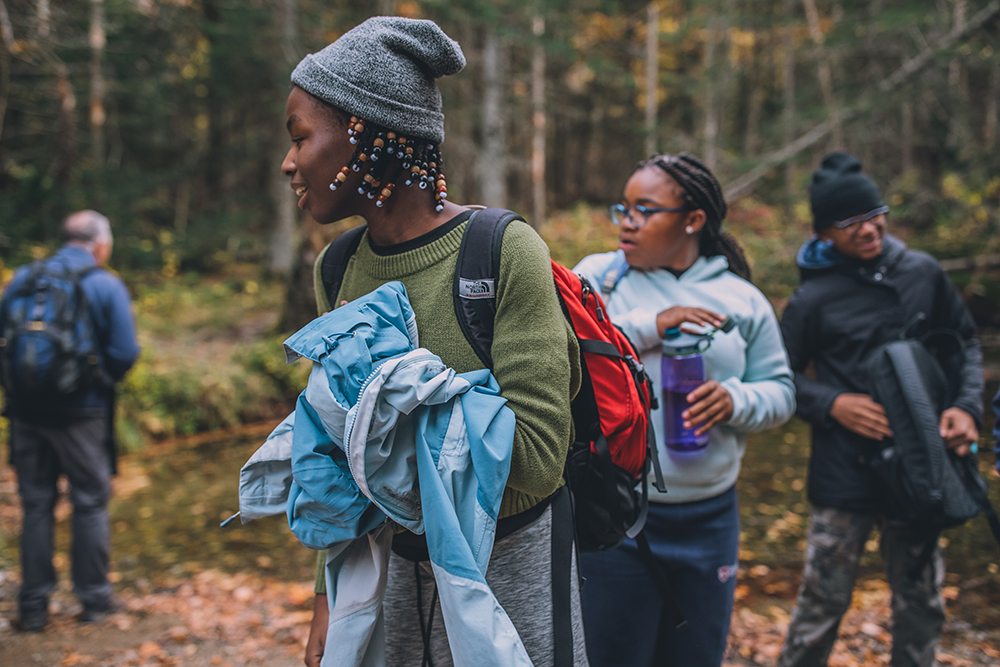

Dress like an onion whenever you head into the backcountry and be sure to pack enough layers to spend a night out in the elements.
5. Layers
Pack for the season, not the weather, remembering that the alpine zone can get quite cold even in the summer. (A hat, gloves and insulated jacket often come in handy above tree line in the summer.) When choosing layers, think about what you would need to survive a long period of inactivity out in the elements.
Layering basics: No matter the season, dress like an onion, utilizing the modular layer system. This system includes a: base layer, mid layer, insulating layer, and a shell layer. Choose warmer layers, and carry more of them for colder hikes; choose lighter layers for warmer hikes. One light or medium pair of gloves will usually suffice for summer hiking.
Materials: Wear and pack only clothes made of non-cotton materials. Maybe you’ve heard the phrase, “cotton kills.” That’s because cotton traps moisture, which in turn pulls away body heat via conduction. When cotton gets wet, it stays wet, making you cold. Instead, choose wicking fabrics: synthetics like nylon, polyester, or rayon; wool; and silk.
The insulation in most coats is either made of down feathers or synthetic materials. Synthetic insulation is bulkier, but retains warming capability when wet. Down is lighter, but must be kept dry to retain its loft, which traps heat. Choose your insulation accordingly to the climate you are hiking in.
Be bold, start cold: You’ll warm up quickly as you begin moving. On your hike, remember that sweat is the enemy, and layers should be removed before you get sweaty. Reduce your pace to reduce sweating, if needed. Likewise, put on your shell layers before your clothes get wet with rain or snow, and bring a trash bag or rain cover to keep your essential layers dry in your pack.
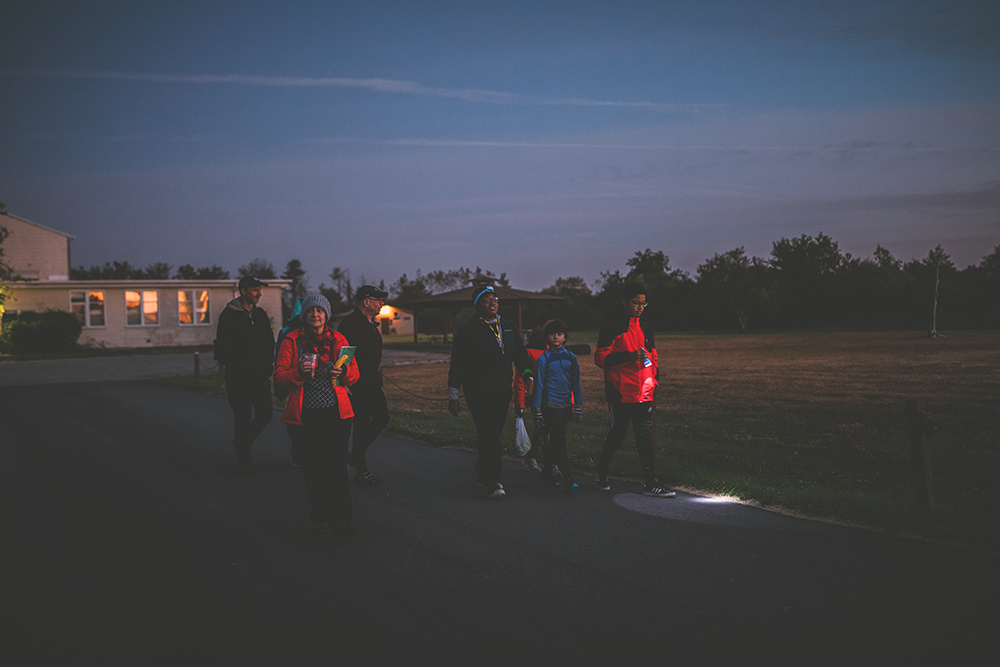

Illumination, such as a flashlight or headlamp, are a must-have in case a hike goes longer than expected and the sun sets.
6. Illumination: Carry a headlamp or flashlight
Always prepare to spend a night in the woods, which means packing a headlamp or flashlight (as well as extra batteries). Consider a light with a lock mode so it doesn’t turn on accidentally, and red mode for maintaining night vision. Check that your light is functional before heading out and keep your headlamp in an easy-to-access spot in your pack.
7. Firestarter
Fires serve as an emergency heat and light source for unexpected nights on the trail. You’ll need to pack both an igniter to start a fire, as well as something to light. Igniters include butane lighters or waterproof matches. The ideal firestarter ignites quickly and sustains heat, allowing time to ignite other fuel. Firestarters may include:
- Dry tinder stored in a plastic bag
- Candles
- Cotton balls soaked in petroleum jelly
- Heat “nuggets” (chipped-wood clusters soaked in resin)
- Dryer lint
For outings where firewood is not available, such as trips above tree line or on snow, we recommend packing a stove as an emergency heat source and snow–melting tool water source.
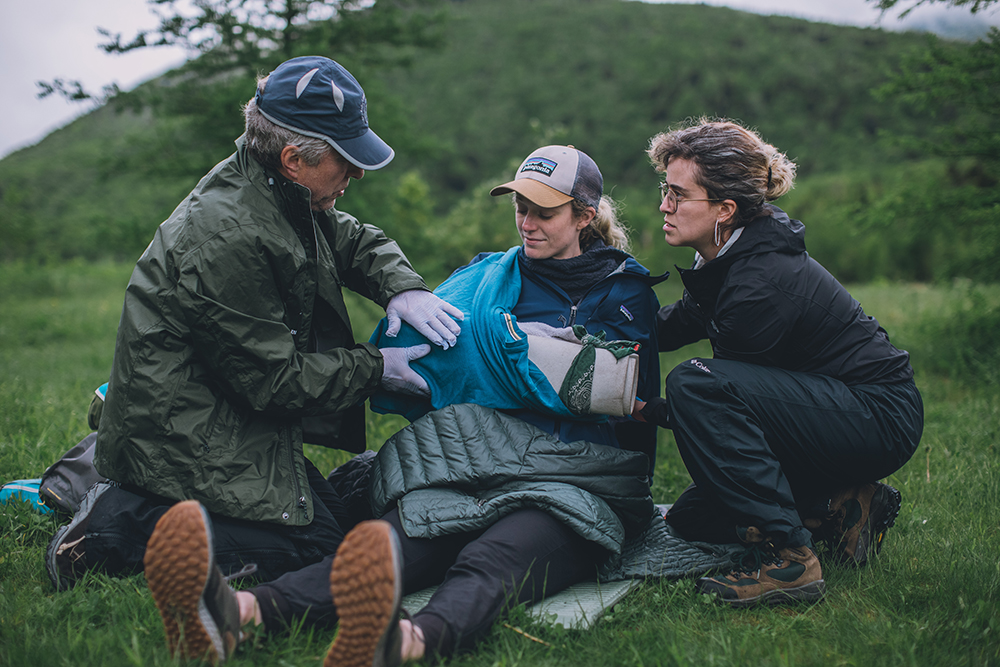

Always throw a first-aid kit into your pack—even on shorter day hikes—for the unexpected injury or illness. (Image is of an AMC Wilderness First Aid training.)
8. First-Aid Kit
Prevention is always the best medicine. Many ailments in the backcountry are simple to either prevent outright, or to address in their early stages. The consequences get higher as ailments get worse or combine with other challenges or injuries. In other words, fix the small problems before they become big problems. Most importantly: stay well fed, stay hydrated, and layer properly.
Know your abilities, grow your abilities: Your first-aid kit is only as good as your ability to use it, so get trained through any number of courses, many of which AMC offers: Wilderness First Aid (16 hrs); Wilderness First Responder (72+ hrs); Wilderness EMT (170+ hrs); or Cardiopulmonary Resuscitation (CPR).
The ideal kit: For those injuries and ailments we can’t prepare for, a well-stocked first-aid kit can save your life or your companion’s. Craft a kit that is at least stocked enough for you, but pre-made kits are fine as well. Make sure you are familiar with how to use everything in the kit. A basic first-aid kit should include the following:
Medications
- Aspirin – Prevents clotting and heart attacks
- Ibuprofen – Anti-inflammatory, reduces swelling [Note: ibuprofen has blood thinning properties so it should not be taken for head injuries.]
- Acetaminophen – pain and fever reducer (good for head injuries)
- Antihistamines (diphenhydramine, cetirizine, etc.) – for allergic reactions
- Imodium – Anti-diarrheal
- Electrolyte powder packets
Soft tissue injury care
- Assorted Band-Aids
- Gauze – 4×4, 5×5, roller gauze
- Medical tape
- Feminine pads – great at absorbency for major contusions/cuts
- Moleskin – for blister care
- Antibiotic ointment
- Alcohol prep pads
- Burn gel
Musculoskeletal injury care
- Ace bandage
- SAM splint
- Triangular bandage, for making slings and swathes
Tools
- Pocket CPR mask
- Trauma shears
- Tweezers
- Lighter
- Safety pins – good for fastening splints and lancing blisters
- Ensolite Pad – can be used for splinting, keeping patient off the cold ground, etc.
- Nitrile gloves – not latex in case of allergies
- Alcohol prep pads – used to clean tools and skin around wounds
- Plastic bags – for packing out medical waste, improvising vapor barriers
Always ask your hiking partners if they have first-aid kits with them before you set out, and let them know where your kit is located—as well as where you keep things like important medication, EpiPens, or inhalers.
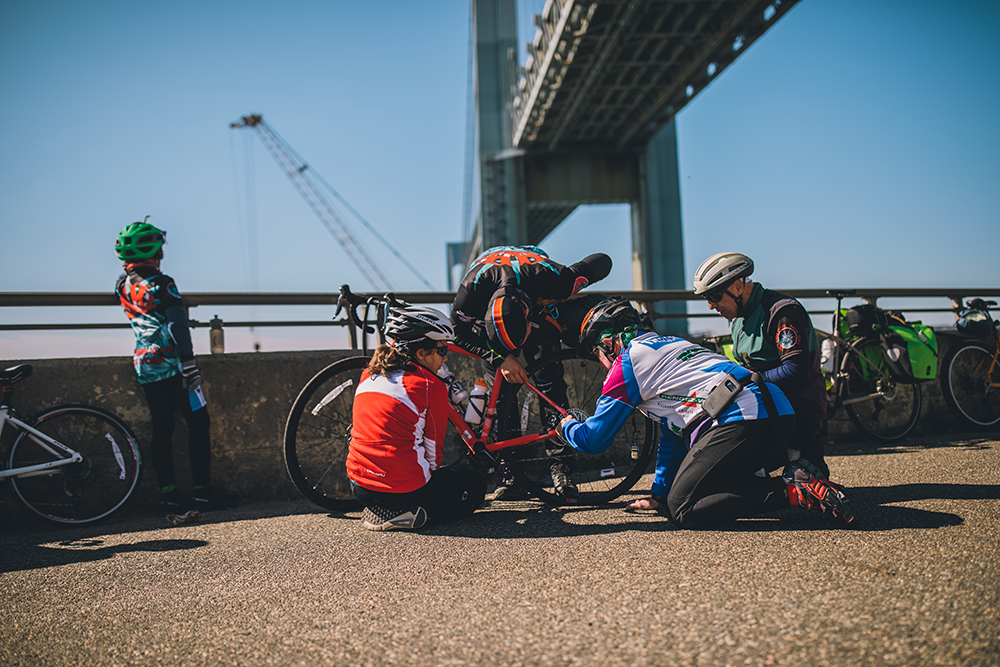

Whether on a bike ride or hiking in the backcountry, always carry the tools you’d need to repair a vital piece of gear.
9. Repair kit
Always check your gear before you go and identify the most important pieces of gear for your outing. Will you still be safe if it breaks? How will you fix the most common malfunctions?
Anyone enjoying the outdoors should be prepared to repair pieces of gear that break or malfunction.
Repair kit essentials:
- Duct tape! (lots)
- Permanent repair tape for patching rain gear, tent flies, etc.
- Paracord
- Zip ties
- Multitool w/plyers, screwdrivers, and knife
- Extra batteries
- Extra buckles
- Needle and thread
Repair kits may need to be adjusted according to your intended activity, be it hiking, climbing, backpacking, or a winter sport.
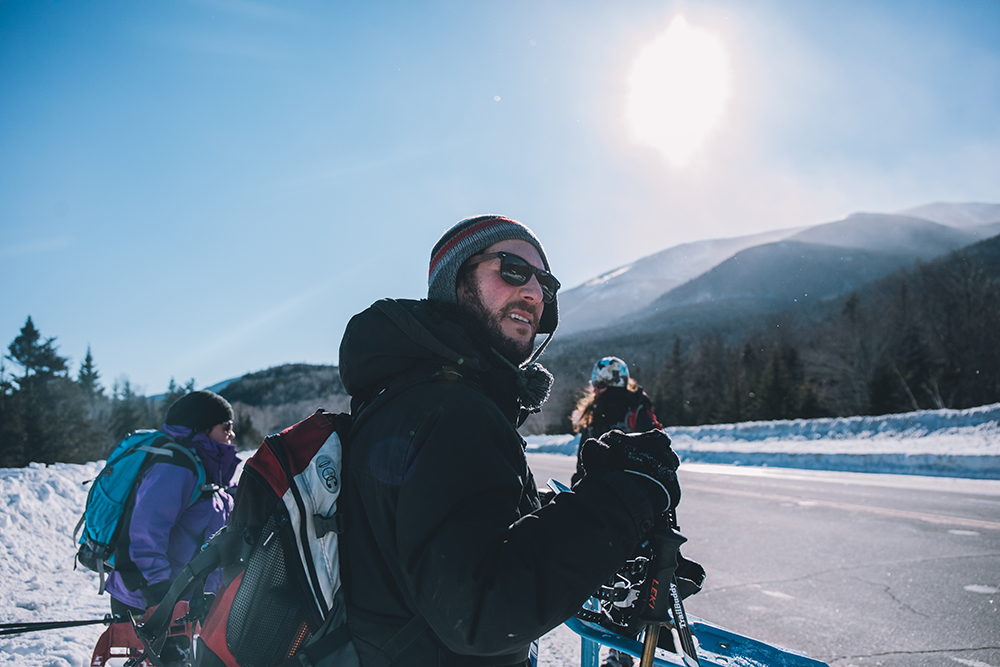

Sun protection is crucial on both summer and winter excursions.
10. Sun protection
Don’t underestimate the importance of caring for your skin and eyes while enjoying the outdoors. Use a broad spectrum sunscreen on exposed skin, and reapply frequently. Choose sunglasses and goggles with ultraviolet (UV) protection; polarized lenses are best for reflected light off of water and snow. (Tinted sunglasses don’t always have enough UV protection.) Products like Dermatone provide a thick protective coating on your skin that protects against sun, wind, and (in the winter) frostbite for a time.
If you’re venturing to higher elevations, keep in mind that ultraviolet rays are often stronger the higher you go. The atmosphere is thinner at higher altitudes and absorbs less UV radiation from the sun. UV radiation intensity increases by about 10 to 12 percent for every 3,000 feet of increase in altitude.
- About 10 percent more UV radiation at 3,288 ft (Carter Notch Hut)
- About 20 percent more UV radiation at 6,288 ft (Mount Washington summit)
For additional information about the 10 Essentials, see the following resources: